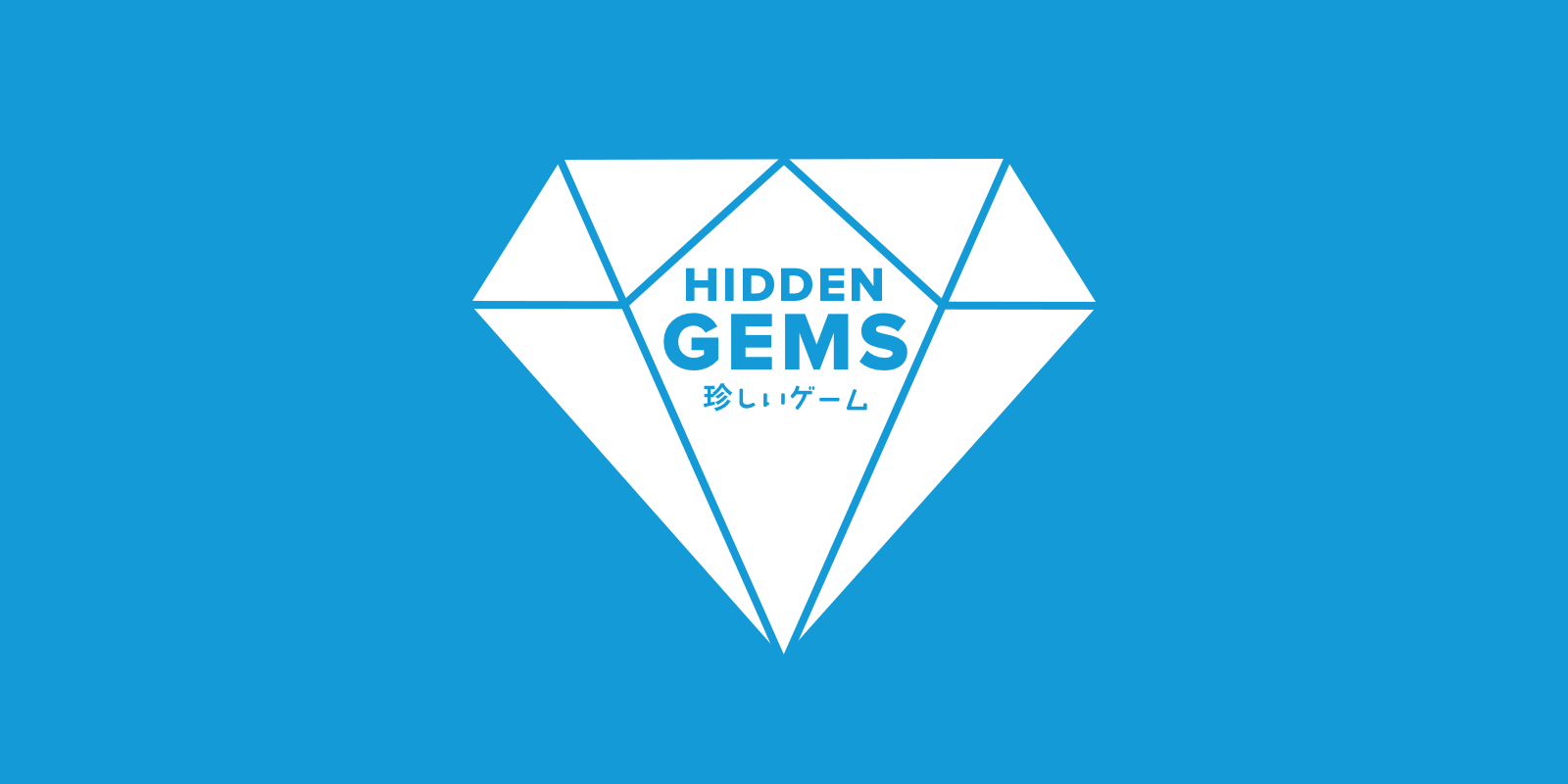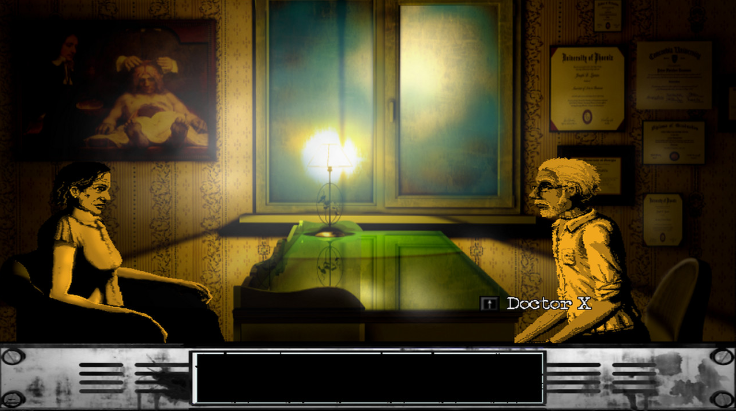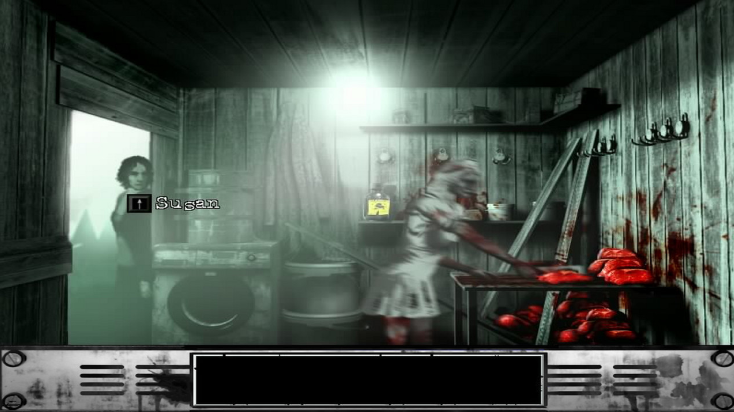Hidden Gems of Game Design: Volume 7
Dark themes, epic strategy, and the post-apocalypse

There are plenty of amazing games that go unnoticed and are not widely played for one reason or another. Maybe it's a diamond in the rough, or the marketing wasn't there, or it could be a game ahead of its time. For this monthly series, I've asked my fellow writers on SUPERJUMP to pick a game they think is deserving of a chance in the spotlight. Let us know your favorite hidden gems in the comments.
Josh Bycer
The Cat Lady (2012)

To this day, there are still people (and media outlets) who view video games as either just for kids or nothing but first-person shooters and sports games. For this month’s entry, I turn to one of the darkest games ever made where your only interaction is point and clicking. The Cat Lady by Harvester Games is the first in a trilogy, with all three games being amazing to play, but this is the one that started it all.
You play as Susan Ashworth, who, after a tragic incident, is left alone and depressed in her apartment taking care of the neighborhood cats (hence “the cat lady” title). When she decides to commit suicide, instead of finding peace, she is drawn to an otherworldly being who grants her immortality and a second chance in exchange for killing some of the most rotten people around.
There is a rawness to The Cat Lady that we don’t really see in video games in general. Everything has this broken down, decrepit look to it, and Susan herself is one of my favorite video game characters. She is not some epic heroine. Susan is a character who has had a hard life – she is cynical, bitter, aimless, and is going to be put through one heck of an adventure where there is no grand prize waiting for her – her reward is simply earning the right to kill herself again. Without spoiling the story, Susan, over time, will start to see the value of living and the importance of finding light in the darkness.
The game is broken up into different chapters where Susan will eventually stumble upon one of her targets, or “parasites”, that she is going to have to kill. As part of her gift/curse, when she is killed, she is taken back to the otherworld to solve some puzzles to be resurrected back in our world. With that said, this is definitely not an action game – all deaths and resurrections are a part of the plot. The puzzle logic does change from chapter to chapter, but nothing that would be considered too extreme for the genre in terms of difficulty. Every chapter is self-contained with the player able to influence things a little bit based on how Susan responds to situations. There are several different endings with one that is considered the “true ending.”

In case it isn’t obvious at this point, The Cat Lady is not a game for everyone and comes with all the trigger warnings one could find. Each one of Susan’s targets has its own heinous crimes to be judged for, so this is 100% not a game for kids.
With that said, while the game has received critical praise from people who have played it (and it's spawned a trilogy), it isn’t really known outside of hardcore circles. The aesthetics and story are such an antithesis to what would become the current state of adventure games. As I’ve said, this is not a game where there is anything that could be considered truly a “happy ending”, and that theme gets carried through to the other games. The original release played today has bugs and issues from being built on older software and hardware. If you enjoy The Cat Lady, the sequels: Downfall and Lorelai continue the themes and story. And just in time for the holidays, there is a new game from Harvester – Burnhouse Lane.
If you’re someone who is looking for an emotional game to play and don’t mind some very dark and mature topics, then check out The Cat Lady.
Antony Terence
Eco Tycoon: Project Green (2009)

Strategy games are all about cause and effect, especially those of your own making. Studio Virtual Playground looked into climate change and made a game that let you simply swap coal plants with renewable energy to fix the world. A gross simplification but it’s one that 10-year-old me didn’t mind.
It’s not the most nuanced city builder but Eco Tycoon: Project Green’s main objective of reducing carbon emissions by a set amount every five in-game years is a premise that only gains relevance with time. Project Green lets you pick your starting region, each with its own distribution of resources and people.
Each region also comes with a fixed number of spots where you can place buildings. You’ll start off with mines, coal plants, and landfills first, filling your region with plenty of pollution. With time, Project Green lets you research new forms of energy generation that offer cleaner fuels with other tradeoffs. The game offers a sizable list of buildings that harness everything from geothermal to nuclear and tidal energy.
Unfortunately, Project Green does little more than offer unique building models and resource indicators for them. It’s a missed opportunity that could have been used to educate players. Instead, 10-year-old me only learned to optimize resource costs and balance multiple goals. Power isn’t the only criterion; you’ll have to manage food, water, and an economy to keep your citizens happy. Lose popularity and you’ll promptly be kicked out of office.
In a not-so-subtle nod to capitalism, prioritizing these needs over your carbon emissions is where things get tricky. It’s a weighing scale that will constantly shift away from you. In the race to lower carbon emissions, you’re bound to remove old buildings and replace them with cleaner counterparts. While cities in most city builders don’t encourage knocking buildings, it’s a necessary part of Project Green. I felt like a LEGO builder as I scrapped existing systems apart before upgrading them.
In addition to city planning, you’ll also need to tackle environmental crises that are thrown towards you at random. Other regions aren’t immune to these and will often ask for financial aid. Loosen your wallets and your neighbors will support you at the next opportunity. But being nice comes at a cost and with carbon emission targets to achieve, kindness is sometimes a luxury.
As for those carbon footprint targets, you get to review them during World Summits with a council of six world leaders who represent the other regions. There’s no competition here, with neighbors offering resources and money in trade deals as long as they benefit both sides. It sounded utopian to me at the time and the idea of the world working together still sounds endearing. Annual reports show you how dangerously close your deadlines are. They’re also a chance to implement policies that will boost the adoption of renewable resources.
While the game is simple, the odds were simply too frustrating. You’ll fail a couple of times before getting used to the game’s pacing. And that’s before random events turn your plans into biofuel. The graphics are nothing to write home about and I don’t remember much of the game’s ambient techno score. But if you’re looking for a simple city builder that can be finished in an afternoon, Eco Tycoon: Project Green is a curious oddity worth looking into. The climate change angle is one I wish more titles covered.
Ben Cantrell
Vactics (2022)
Vactics is a new post-apocalyptic mech roguelite available on Steam Early Access. This is one for strategy fans who want to dig into something in the same vein as Into The Breach or Hoplite. With only 22 reviews on Steam, Vactics is perfect for highlighting as a hidden gem. If you like stylish turn-based strategy games with a sci-fi vibe, this one’s for you.
Vactics deploys a hex-grid of procedurally generated battlefields. Each run is like a post-apocalyptic game of chess, full of futuristic mechs, enemies and obstacles. Players confront an army of invading robots called Vactics in turn-based battles. They'll build their own mech and save a fictional metropolis known as Solitude City. As with any roguelite, there’s a constant threat of perma-death which adds to the tension.
Players accumulate points on each run to spend on unlocking new upgrades called tech. Tech will give a strategic advantage on the next run. The tech itself varies quite a lot. During my runs I was able to unlock a simple dash and a more powerful teleport ability, both were super fun to use. There's also dozens of mods, which can alter the 12 kinds of available tech. And with each ability on a cool-down, players will need to be strategic about when they put them into use.
Combat requires players to get close enough to an enemy mech to carry out an attack. But they also need to avoid both the ranged and melee attacks that enemy mechs can dish out. Vactics reminds me of an asynchronous game of chess. Imagine one player has a single over-powered piece on the board, versus an army of enemy pieces.
If used well, the extra abilities give players enough of an edge in battle to take down the hordes of enemies. Yet, if their tactics aren't well-planned, enemies can swarm and it’s game over. With a new run starting almost immediately, it's easy to jump back in though.
Vactics has over 50 achievements to unlock. And a ‘daily district’ mode which has players competing in an online leader board. There's a codex to unlock too, with lore for all Solitude City's enemy mechs, upgrades and districts.
The game is a labour of love for Melbourne-based solo developer Gerard Delaney. He works with artists Scott Bartlett and Athena Kipen as studio ‘The Lemur Conspiracy’. He started work on Vactics in mid-2020, creating the game as a side project. Continuing to refine the gameplay until late 2021, he then started developing it full time.
At first it appeared that Vactics would be too complicated for my liking. But it was nice to discover it has a simple and solid strategic game loop. Through successive runs, I unlocked new abilities which deepened the gameplay. The end result was a satisfying sense of mastery. Like all good strategy games, this one is easy to pick up but challenging to master.
Vactics is well designed and effective at teaching the basics during early runs. It then ramps up the challenge in a balanced and thoughtful way. The game also has some excellent music and unique artwork. Combined with solid mechanics, this hidden gem has a lot of potential.


